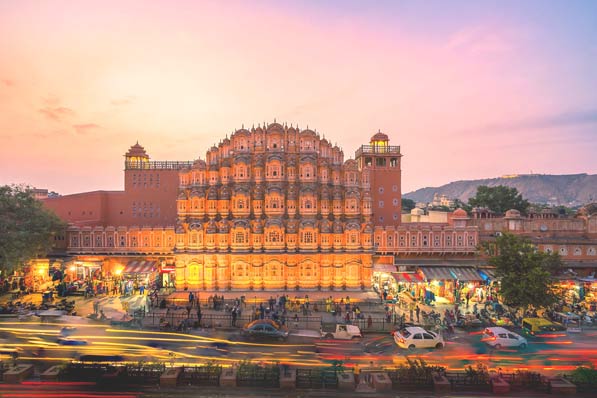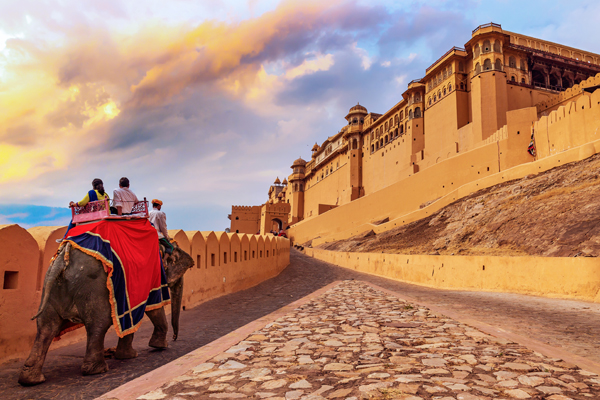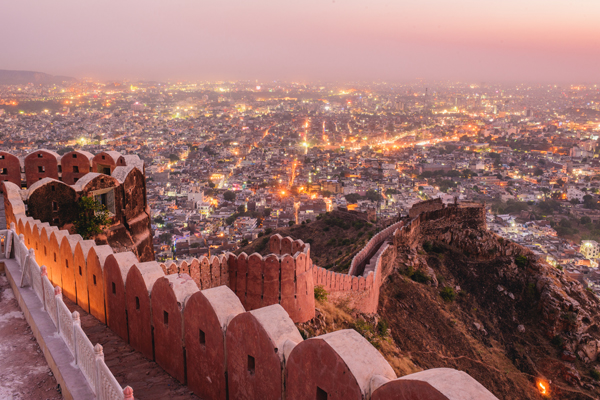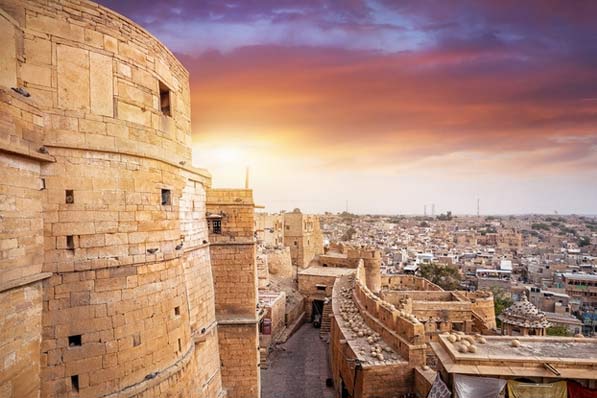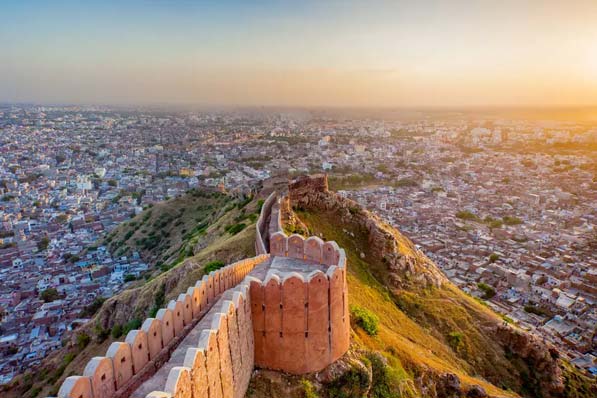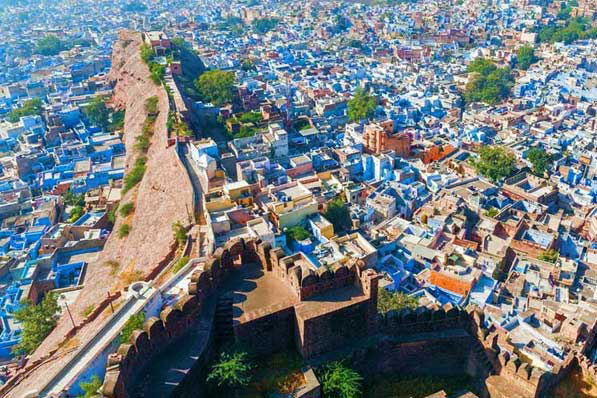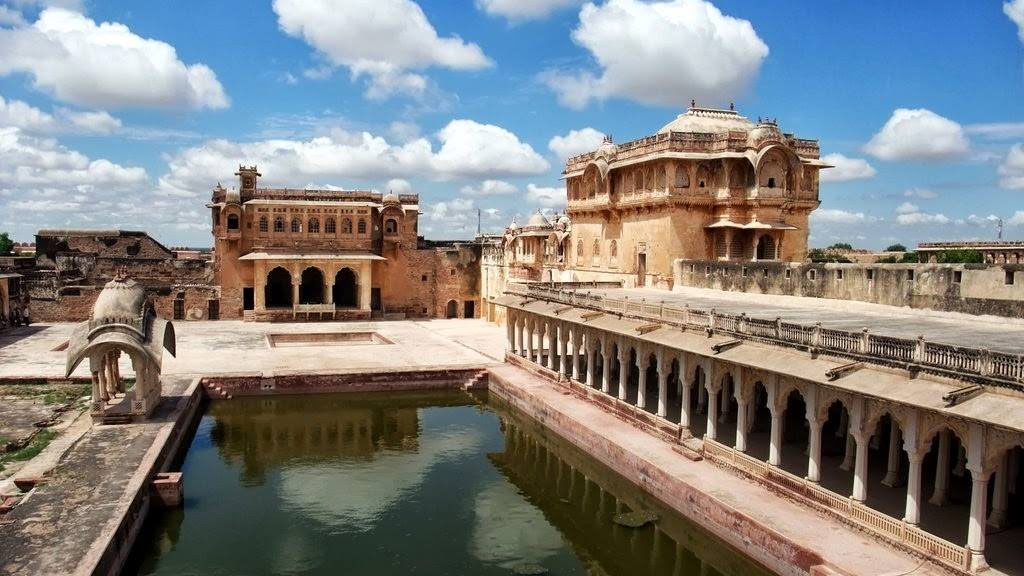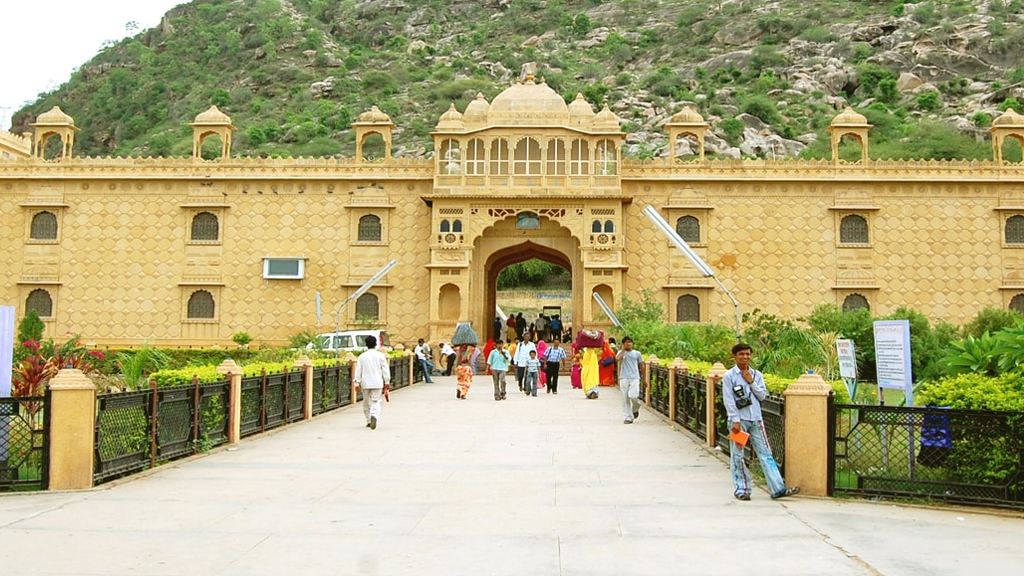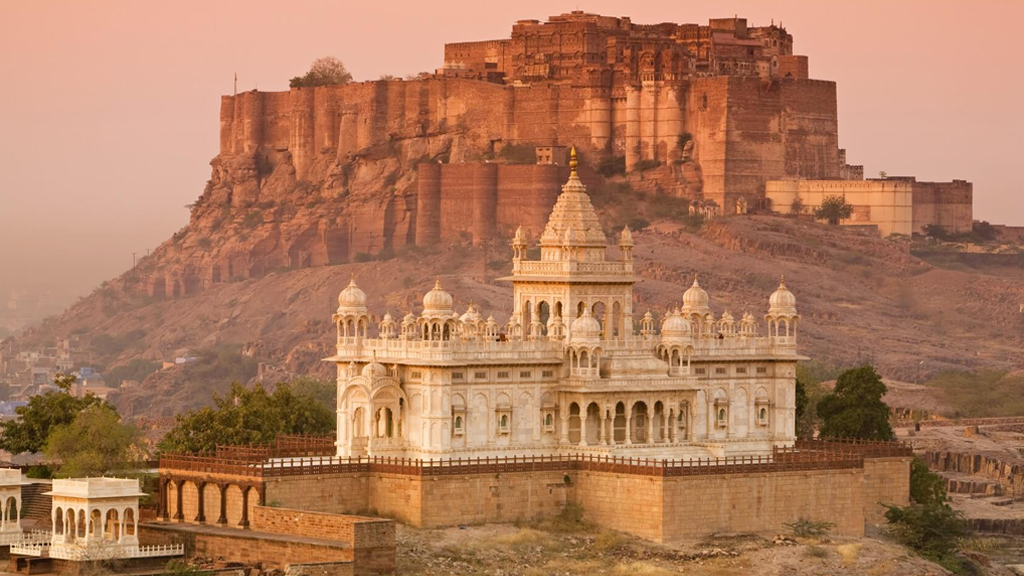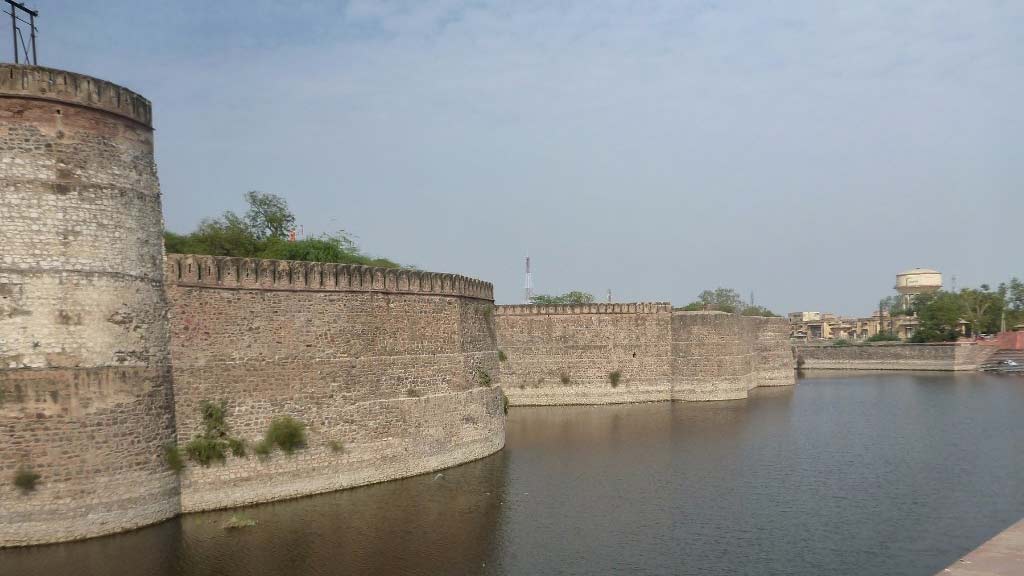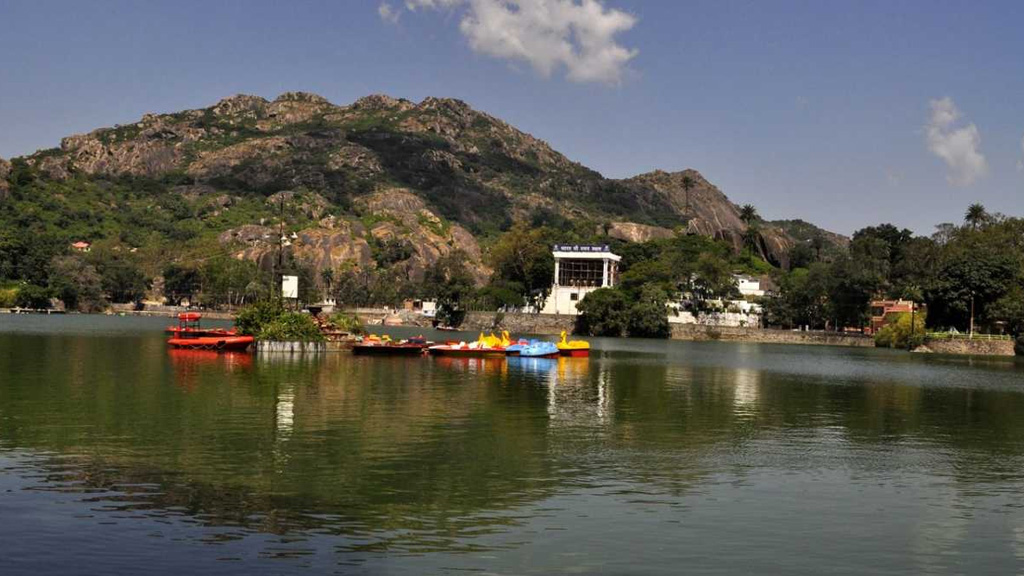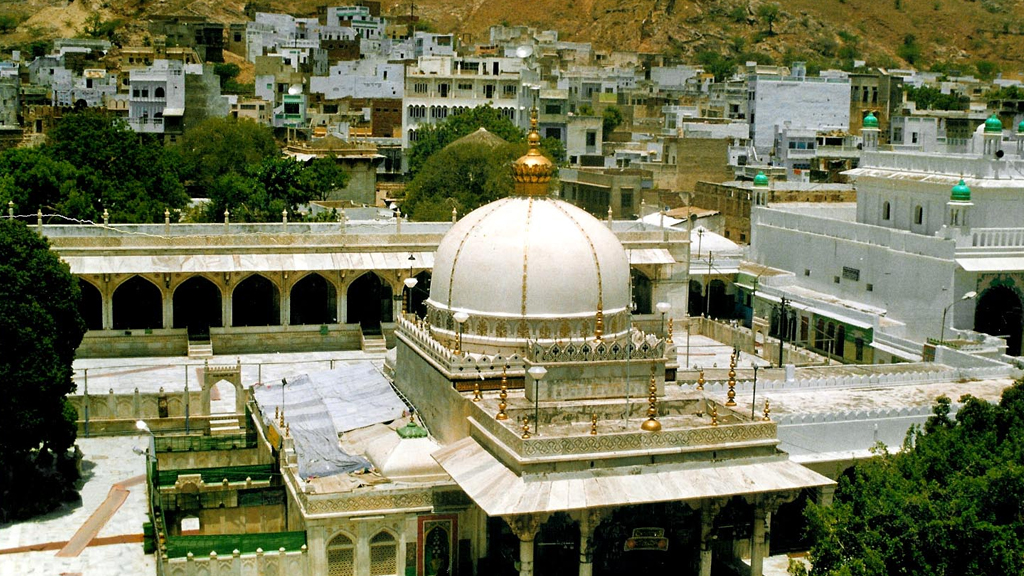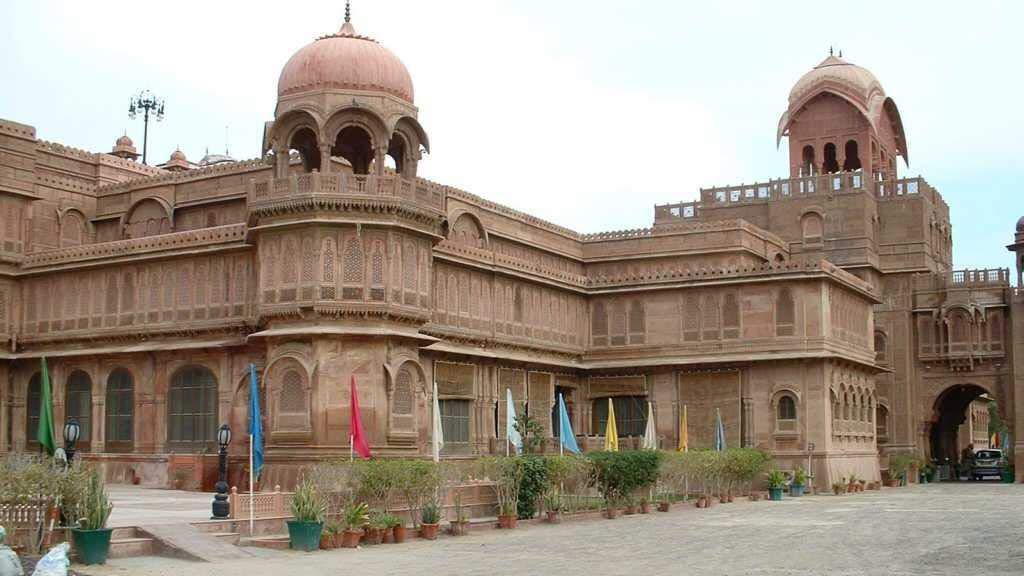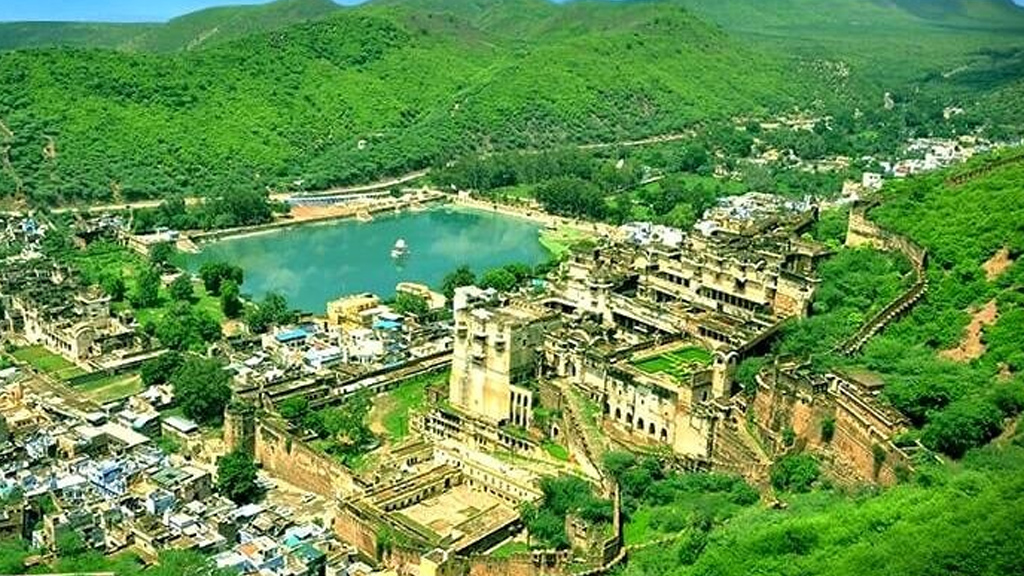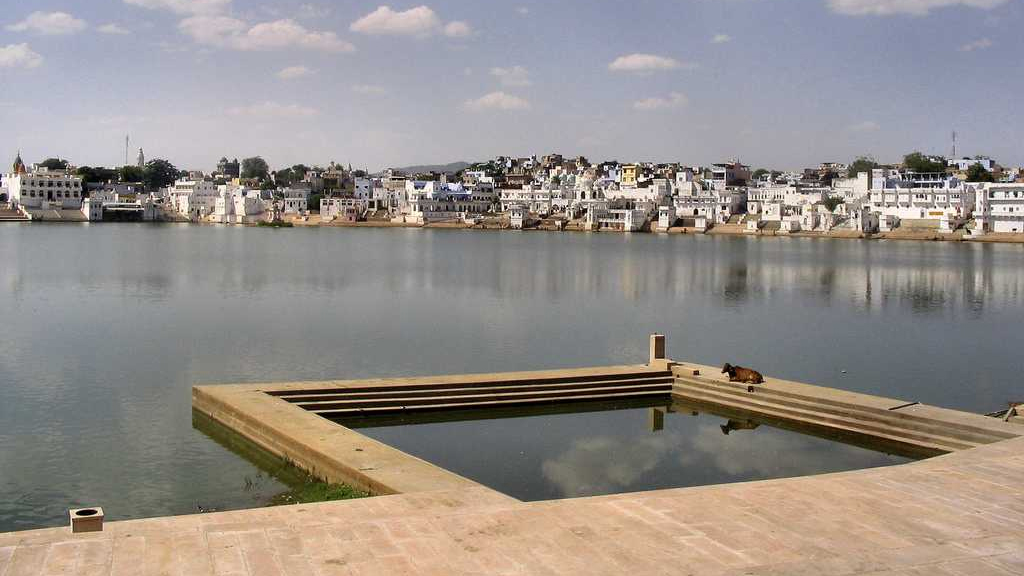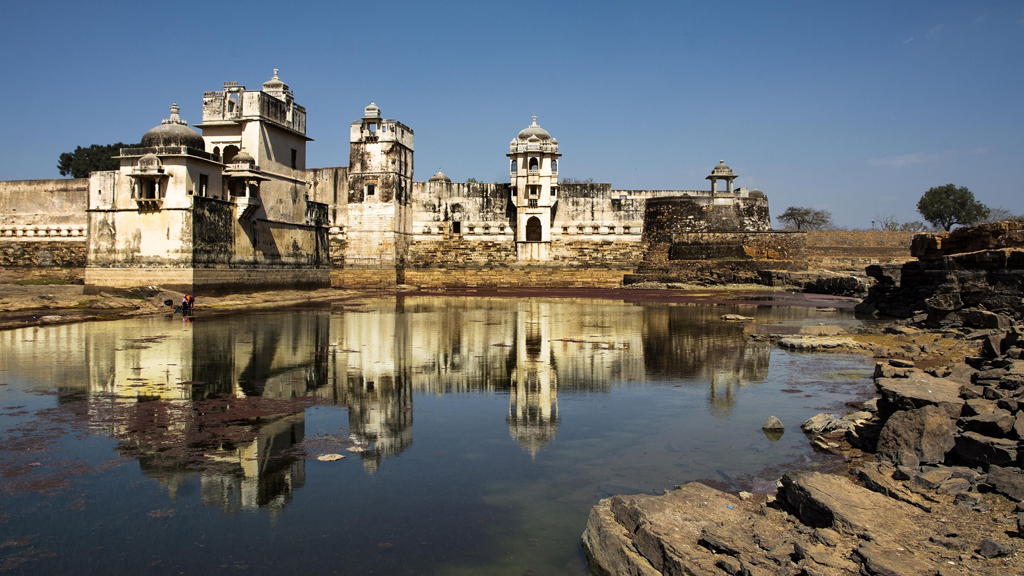Places to Visit in Jaisalmer
Discover the top places to visit in Jaisalmer with eRajasthan Tourism’s travel guide and learn about the travel trip for a smooth holiday.
Introduction
Jaisalmer is known as the Golden City of Rajasthan. The aureate glow of Jaislamer comes from the yellow sandstone used in its forts and havelis, which glows golden underneath the sunlight. The warmth you feel here is not merely from the sunlight but also from its friendly people. Jaisalmer is amongst the friendliest and most hospitable cities in the world.
Who founded Jaisalmer?
Rawal Jaiswal, a Rajput chief of the Bhati Clan decided to move his capital to a new city leaving behind Lodhruva. In the 12th century, he laid the foundation of the Kingdom of Jaisalmer. He named the new city Jaisalmer from two words Jaisal (his own name) and mer which in Sanskrit means a mountain or an elevated place. Jaisalmer became a significant centre where medieval trading flourished.
One of the most iconic attractions of Jaisalmer is the Jaislamer Fort, locally known as Sonar Quila. It is one of the largest and the oldest ‘Living Forts’ in the world. The Jaislamer Fort not only is a historic landmark, but it also acts like a township which has havelis, hotels, businesses, etc. More on this below.
10 Best Places to Visit in Jaisalmer
Jaisalmer is replete with many attractions narrating the stories of its glorious past. Every fort, palace, and haveli showcases an exemplary architecture and craftsmanship. The use of yellow sandstone to build edifices in and around the city is what gives the golden tint to its cityscape.
Positioned on the edge of the mighty Thar desert, Jaisalmer stands as a fortified city near the Indo-Pak borders. In addition to being an important tourist city of Rajasthan, Jaisalmer is also a significant cultural hub. It boasts a regal history of the Rajputana Kingdom and celebrates its rich culture through its customs and vibrant festivals.
Glimmering sand dunes, abandoned villages, tranquil lakes, imposing forts, and age-old temples are amongst the main attractions to visit in Jaisalmer. Apart from its ornate edifices, the folk traditions, music, dance, handicrafts showcase a rich and diverse culture. To explore the best tourist spots in Jaisalmer, here is a list of places to visit in Jaisalmer, some of which you can easily cover in 2 days.
Jaisalmer Fort
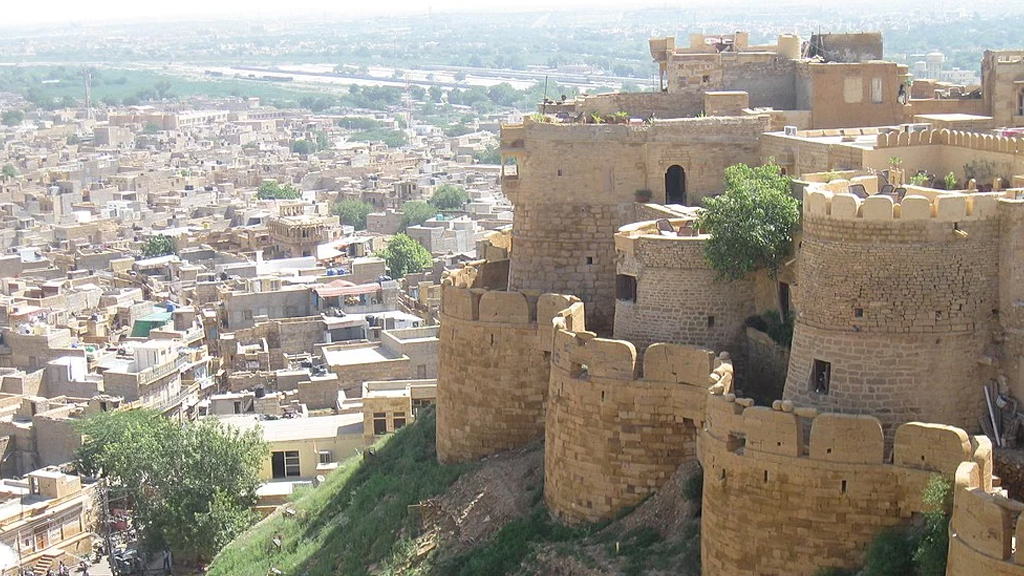
Standing tall and majestic in the heart of Jaisalmer, lies the resplendent Jaisalmer Fort. The ginormous fort is positioned atop Trikuta Hills at an elevation of 250 feet and is fortified by towering walls that are 30 ft. in height. At such a staggering height, one gets to see the sweeping views of the entire city. It is counted among the top historic spots to visit in Jaisalmer. In fact, no Jaisalmer tour is complete without a trip to Jaisalmer Fort.
The Bhati Rajput ruler Rawal Jaiswal commissioned the construction of Jaisalmer fort in 1156. The use of yellow sandstone is quite evident from the appearance of the massive citadel. The fort is a shining example of architectural finesse and stands as the pride of Jaisalmer and a symbol of Rajputana history. Visitors must pass through the four massive gates that will lead them towards the main areas of the fort.
Also known as the Golden Fort or Sonar Quila, the fort reflects an iridescent glow when bathed under the sunlight. And after sunset, the artificial lighting around the fort illuminates it in shimmering light. Jaisalmer Fort is a part of hillsforts of Rajasthan and in 2013, it was designated as a UNESCO World Heritage Site. However, the sunkissed citadel isn’t only a historic site. Around 4000 people (progenies of the fort’s earliest inhabitants) reside in Jaisalmer Fort and have their residences, havelis, restaurants, cafes, and businesses. These were passed down from one generation to another. This is why Jaisalmer Fort is called one of the few ‘Living Forts’ in the world.
The main attractions for visitors inside Jaisalmer fort are:
- Raj Mahal Palace: Erstwhile residence of the Maharawal of Jaisalmer.
- Baa Ri haveli: A 450-year-old haveli which now has been turned into a museum displaying clothes, utensils, etc.
- Jain Temples: Seven temples, all made with yellow sandstone and have more than 600 idols and various old manuscripts.
- Laxminath Temple: shrine dedicated to Hindu deities Lord Vishnu and Goddess Laxmi
Other attractions include intricately old canon, ornate havelis, pavilions, towers, and narrow lanes selling colourful puppets, textiles, handicrafts, etc.
9:00 AM to 5 PM
Indian Nationals: INR 50, Foreigner Nationals: INR 250, INR 50 for Camera Fee, INR 100 for Video Camera
There are seven Jain temples inside the fort which are amazingly carved, so, don’t miss out on them.
Kuldhara Village, Jaisalmer
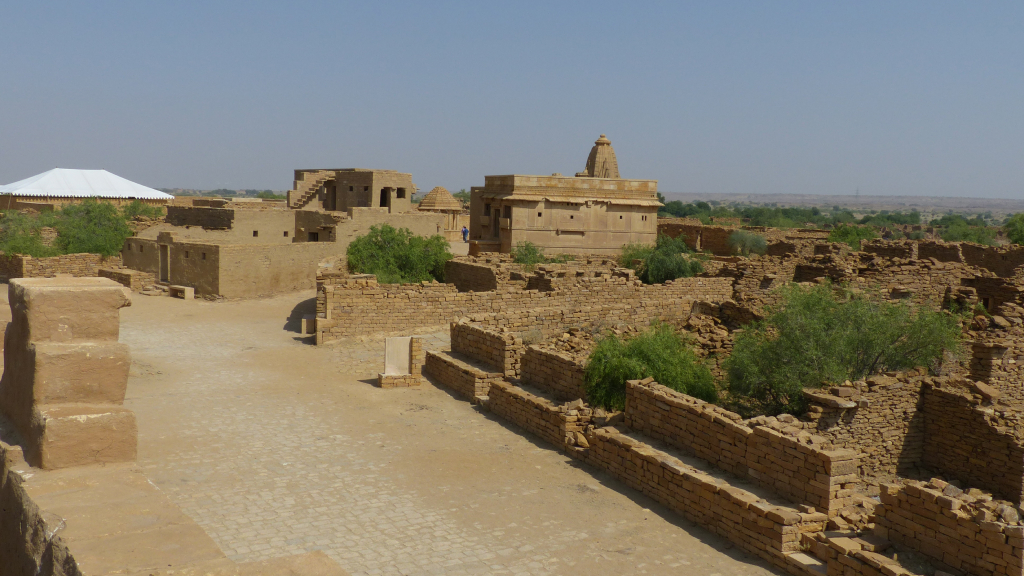
There are mysterious and eerie places to visit in Rajasthan, and Kuldhara Village in Jaisalmer is one of them. The village was once said to be a prosperous abode of Paliwal Brahmins, but it was abandoned overnight and the reasons behind it are still debatable. Some claims suggest that Kuldhara was cursed by the villagers who left their ancestral home so that no one would ever be able to settle there. Others believe water scarcity and natural disasters caused inhabitants to move out from this land.
For the last 200 years, there has been nothing but desolation in Kuldhara Village. There are ruins of houses that are managed by the Archaeological Survey of India (ASI). This ghost village is 17 km from Jaisalmer and is said to be the most haunted place to visit in Jaisalmer. Stories of paranormal activities in this village fascinate tourists who are drawn to this village. Under the broad daylight, the laid-bricks and ruins become a great photographing spot for travellers. However, after sunset, people are not advised to stay in this village.
Those with a fascination for folklore, myths and mystery should definitely visit Kudlhara village on their Jaisalmer tour.
Gadsisar Sagar Lake Jaisalmer
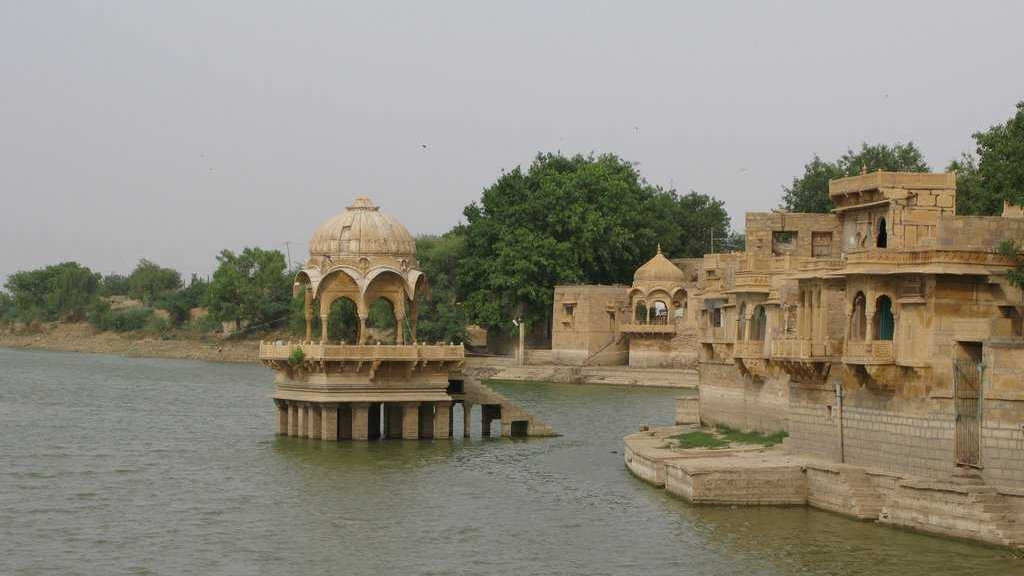
In the sunbaked and arid city of Jaisalmer, lakes such as Gadsisar Sagar are an oasis that acts as lifeline for humans, birds and animals. Seeing dryness everywhere, the sight of Gadsisar Sagar Lake is sure to be a treat for the eyes. In a parched region like Jaisalmer, water is already a scarce resource. Knowing this and to provide supply of water to the general populace during dry spell, King Rawal Jaisal built an artificial lake near Jaislamer Fort.
The earlier source of water for the Gadsisar Sagar Lake was rain. However, in modern times Indira Gandhi Canal supplies water to this lake. Gadsisar Sagar Lake is a popular tourist attraction in Jaisalmer where people come for relaxation, enjoy boating and birdwatching. One can also watch marvellous views of the city and the desert from different watchtowers installed around the lake. On the shoreside of the lake, a beautiful structure made of yellow sandstones named Tilon Ki Pol stands majestically. There is also a Krishna Temple nearby that you can visit.
8 AM to 7 PM
INR 100 for Pedal Boat (2 Seater)
INR 200 for Pedal Boat (4 Seater)
INR 300 for Row Boat (6 Seater)
Take a boat ride for a wonderful experience.
Patwon ki Haveli Jaisalmer
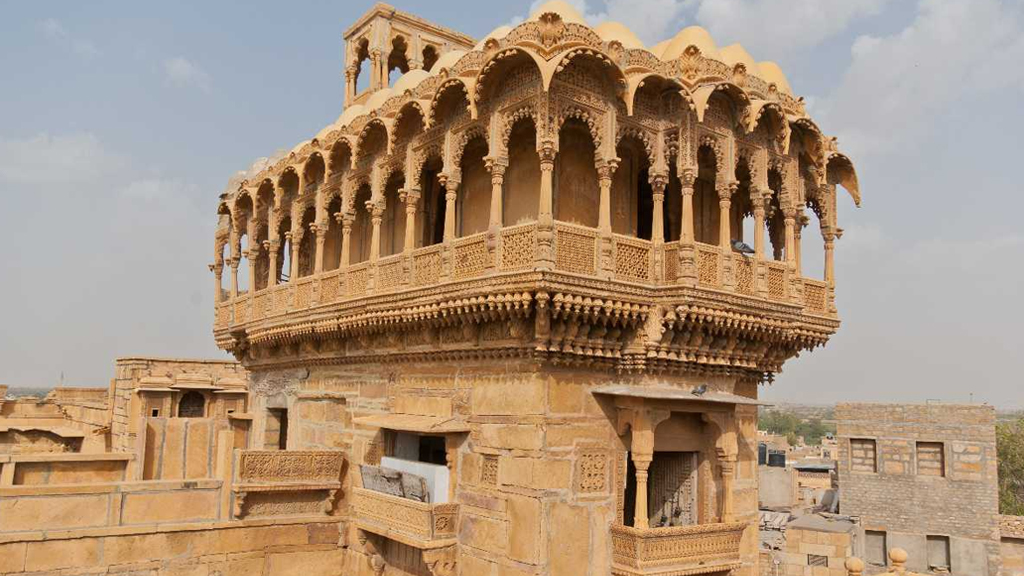
Known as the Mansion of Brocade Merchants, Patwon ki Haveli is a shining gem of destination in Jaismaler, Rajasthan. It is said to be the first grand haveli that was constructed in the city and gained attention for its majestic architecture. Patwon ki Haveli is also the oldest standing havelis in the city, making it one of the prominent tourist places to visit in Jaisalmer. This haveli isn’t just another regular building but rather a glorious symbol of Jaisalmer’s rich architectural heritage.
Located in a narrow street, the Kothari’s Patwon ki Haveli showcases fine carvings on its exteriors. The ornate archways, balconies, or windows every minute space of this edifice was painstakingly carved and embellished. The carvings on the havelis show beautiful depictions of flowers, animals, trees, mythological creatures and scenes of everyday life.
The foundation of Patwon ki Haveli was laid down in 1805 by a wealthy merchant and trader named Guman Chand Patwa. Having a desire to leave an impression of Jaisalmer and show his affluence, he constructed the grand structure which became a glorious landmark. Later, 50 years down the road, each of his sons constructed a separate floor which became a magnificent group of mansions.
Bada Bagh Jaisalmer
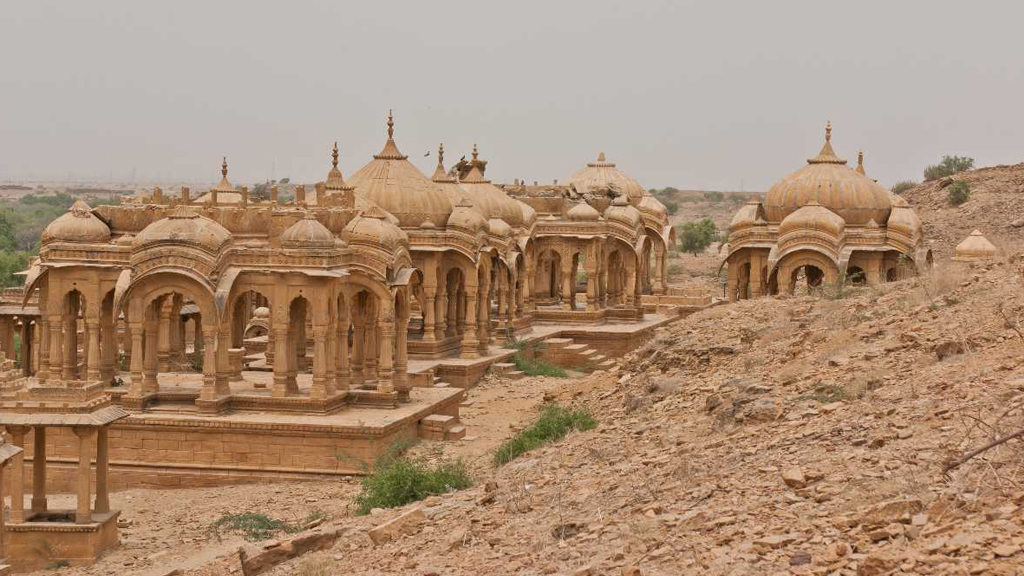
Bada Bagh which translates to Grand Garden is among the incredible tourist places to visit in Jaisalmer. The space has a collection of different cenotaphs that were built by Jaisalmer’s kings to honour the departed souls of their families. It all started when a successor of Maharawal Jaisal Singh, Jait Singh II commissioned a construction of a dam to have a water tank which turned the nearby area green. After his death, a beautiful garden and dome-shaped cenotaphs or chattris (as called in local language) were built as a tribute to Maharaja Jait Singh II by his son Lunkaran.
Each and every cenotaph present in the garden was meticulously built and was decorated with carving and designs that till this date look magnificent. Construction of cenotaphs to honour the departed souls was done by kings of Jaisalmer who ruled here in the 18th, 19th and 20th century. Bada Bagh is just 5 kilometres from Jaisalmer city and must be visited by anyone interested in art, history, architecture, and photography.
Nathmal ki Haveli Jaisalmer
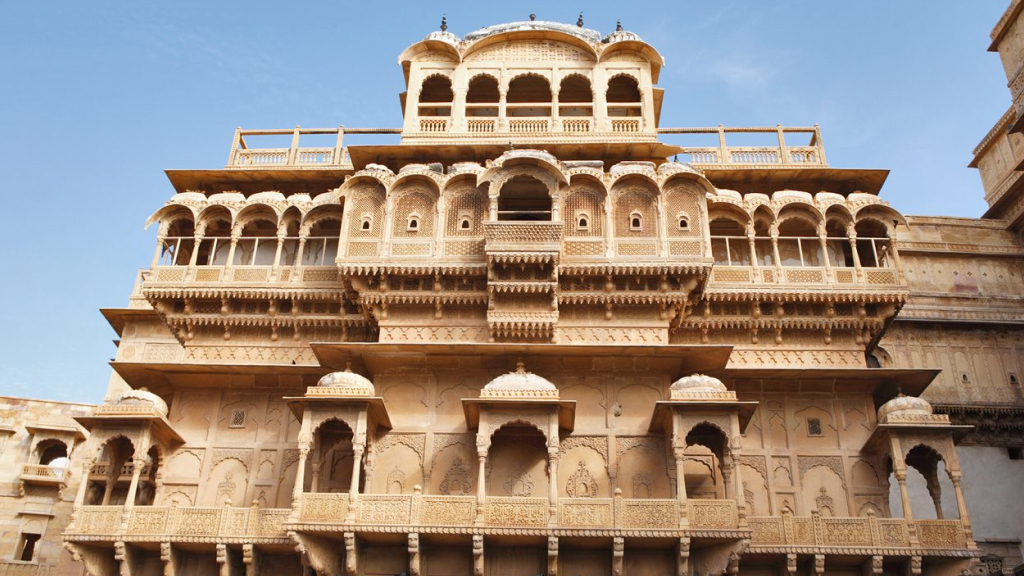
There is no dearth of intricately carved buildings with exquisite architecture in Jaisalmer, and Nathmal ki Haveli fits right into this description. Built in the 19th century, Nathmal ki Haveli is counted among the most beautiful places to visit in Jaisalmer. It was commissioned by Maharawal Berisal in 1885 CE. This stunning mansion served as the residence of the then Prime Minister of Jaisalmer, Diwan Mohata Nathmal.
The building of Haveli was given to two brothers called Hathi and Lulu. They both took each section and began working independently for the Haveli. The final result came out to be a unique asymmetric but beautiful structure mirroring the other with distinctive nuances. The architect of the Haveli showcases influences of Rajasthani and Mughal elements. All its walls and jharokhes showcase engravings of flowers, horses, birds, soldiers, etc.
While the exteriors of Nathmal ki Haveli are eye-catching, what’s even more breathtaking are the gorgeous interiors of this mansion. The mesmering paintings and detailed carvings elevate the beauty of this place. For all history enthusiasts, art and architecture lovers, or those in search of unique experiences, Nathmal ki Haveli in Jaisalmer is a must visit.
Desert National Park Jaisalmer
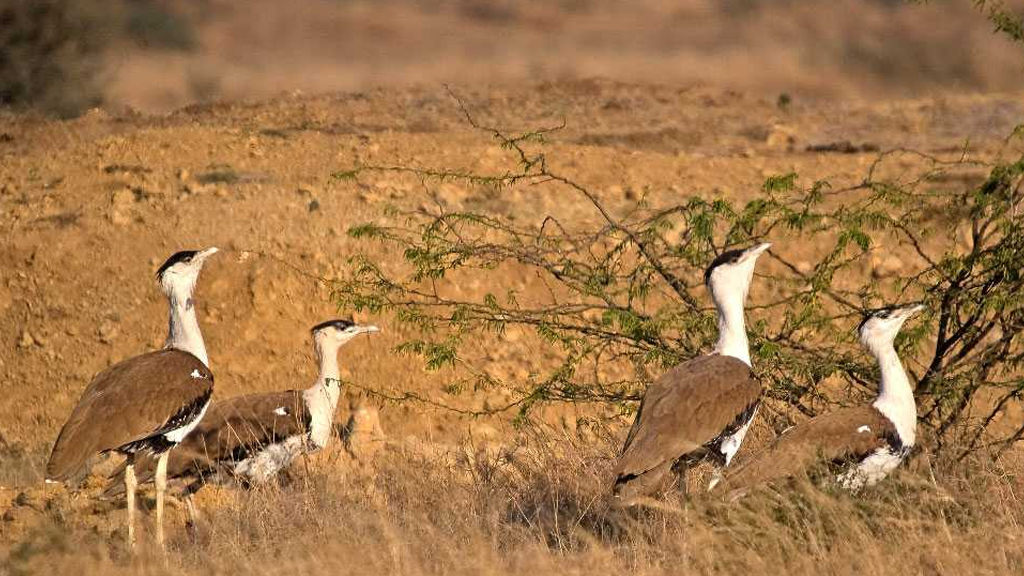
Situated along the international borders, the Desert National Park acts as a sanctuary for protection and conservation of all desert animals. Spread in a massive area of 3100 square kilometers in Thar Desert, this park is home to diverse flora and fauna found in arid regions.
Between the rugged rocks, salt lakes, and sand dunes, one gets to witness an entire ecosystem thriving on the parched piece of land. The most famous bird to spot here is the Great Indian Bustard (Godawan) which is critically endangered. Then you can also spot animals like Camels, Chinkara, Blackbuck, Indian Desert Fox, Desert Cat, Eagles, Falcons and some migratory birds.
Apart from thorny shrubs, grasses, cacti and other xerophyte plants, there is little to no vegetation to support the animals, birds, and reptiles, yet these species have adapted well to the arid climate and thrive beautifully in the desert.
The sand dunes of Desert National Park can reach up to 200 metres which is perfect for a desert safari. Thrilling activities like jeep safari make Desert National Park the most adventurous places to visit in Jaislamer. The best time to go for a wildlife safari in Desert National Park Jaisalmer is from November to March.
10 AM to 5 PM
Indian Nationals: INR 100, Foreigner Nationals: INR 300
Take a camel ride for more fun.
Jaisalmer War Museum
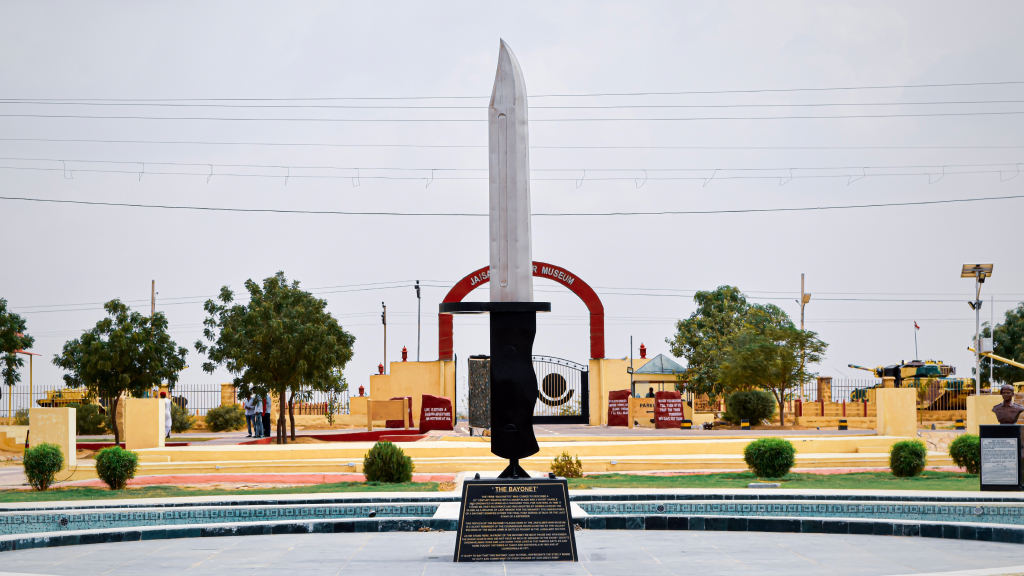
One of the best museums to visit in Jaisalmer is the Jaisalmer War Museum (a must visit for every Indian tourist). The museum was established by the Indian Army in 2015 during the Indo-Pak War of 1965, War of 1971, and the Battle of Longewala. Jaisalmer War Museum showcases and honours the sacrifice and bravery of Indian soldiers in these battles. The exhibits and artifacts displayed in the museum depict India’s valorous military history. It displays an interesting collection of arms and ammunition, tanks, fighter jets, etc.
Jaisalmer War Museum pays solemn tribute to all the war heroes who laid down their life on the battlefield for their motherland. There is a dedicated memorial wall for soldiers who are holders of Param Vir Chakra and Maha Vir Chakra. Wander through the three halls of the museum, which are – Indian Army Hall, Battle of Longewala Hall, and an Audio Visual Room. The most iconic attraction here is the Indian Air Force fighter jet Hunter which caused massive destruction to the combatant’s tank during the war.
In the Audio Visual Room, you can hear and watch the stories of India’s bravehearts and their courageous acts on the battlefield. You can also visit the souvenir shop and get refreshments at their onsite cafe called ‘Bunker cafe’.
This museum tour is a deeply insightful and educational experience for many visitors, especially those interested in Indian military history.
10 AM to 6 PM
INR 50 for Indian nationals and INR 100 for Foreign nationals.
Tanot Mata Temple
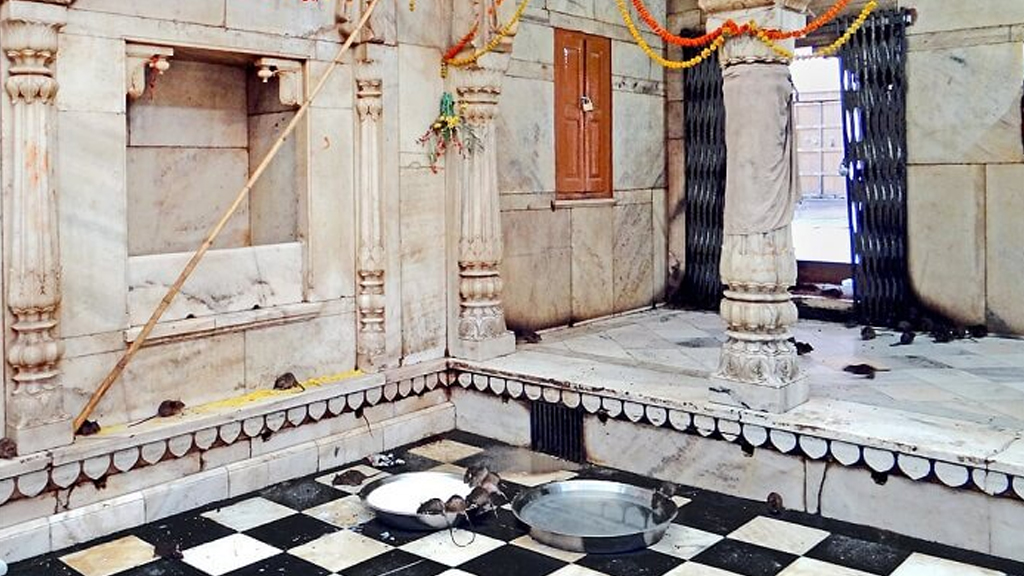
Tanot Mata Temple is a Hindu shrine dedicated to Tanot mata who is considered a reincarnation of goddess Hinglaj (a form of goddess Durga). The temple is near the Indo-Pak border where the Battle of Longewala was fought. It is a highly revered religious shrine for locals and even for the soldiers.
During the Battle of Longewala, Indian soldiers had to face heavy shelling. Several bombs were dropped near the area where Tanot Mata Temple is located. But none of the bombs could cause any damage to the temple. Ever since then, the temple has been a revered ground for many. The artefacts related to the war are still kept inside the temple’s museum.
Tanot Mata Temple is approximately 120 kms away from Jaisalmer. To reach this temple, take a scenic drive through the Thar desert and after a walk of 10 minutes, the sight of the revered shrine becomes visible. A palpable devotion, chime of temple bells, and fragrance of incense sticks permeates the air. Whether you want to seek spiritual solace or learn about the history of this shrine, Tanot Mata Temple remains amongst the most religious places to visit in Jaislamer.
10 AM to 6 PM
Sam Sand Dunes
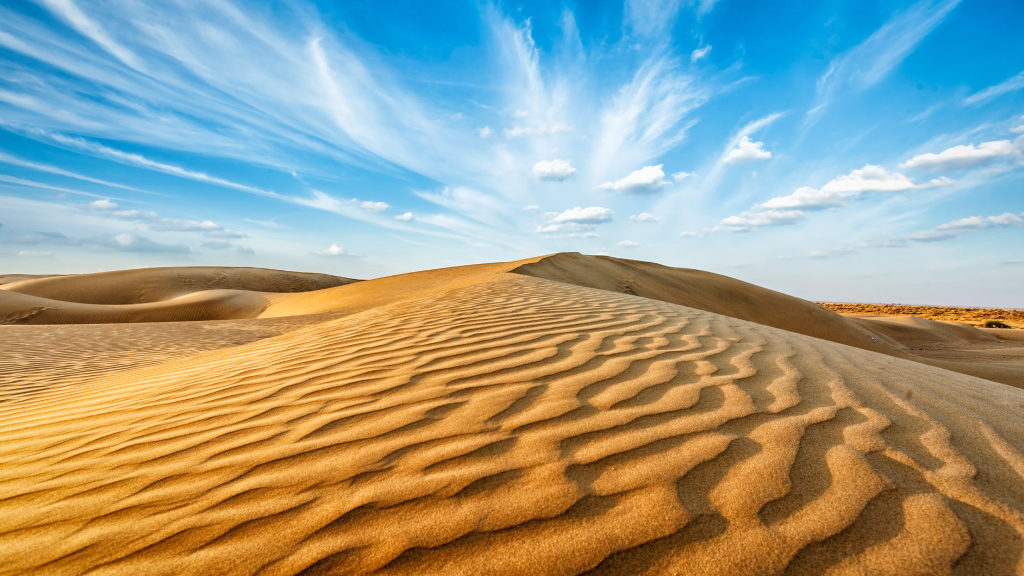
A trip to Jaisalmer wouldn’t be complete without a visit to Sam Sand Dunes, which offers an exciting range of activities. Sam Sand Dunes is an experience that offers a thrilling desert safari, camping under a starlit night, and folk performances (Kalbeliya, Ghoomar, and Chari) to its guests. Enjoy the views of undulating sand dunes as tall as 30 to 60 meters rising on a golden stretch of sand appearing like a wave.
Experience the homespun rural life of Rajasthan with interesting activities for a fulfilling experience. The accommodation provided in the camps ranges from standard to luxury. In addition to activities like desert safari and camping, one can also enjoy wildlife spotting, parasailing, quad biking, birdwatching, and camel rides.
Savour delicious Rajasthani cuisine prepared by local cooks and enjoy dining on the dunes with your loved ones. The scenic backdrop of Thar dessert along with a table full of Rajasthani delicacies will give you an unforgettable epicurean pleasure.
Open 24/7
INR 20 to 200 for Camel Safaris and INR 500 to 1500 for Jeep Safaris per person
Sam Sand Dunes, Near Sam Toll Barrier, Right Side On Sam Road, Jaisalmer, Rajasthan, 345001, India
Travel Tips for Jaisalmer Tour
Jaisalmer, the sunlit city, is a treasured destination of Rajasthan. Marked by its yellow sandstone forts, ornate havelis, centopahs, and revered shrines, Jaisalmer is like a tapestry with exquisite threadwork. It’s a city for adventurers and wildlife enthusiasts, thanks to the presence of Thar Desert. History buffs, art and architecture enthusiasts will also love their time exploring the majestic bastions and havelis of Jaisalmer. Likewise, the age-old temples and religious shrines attract many pilgrims, including locals and tourists.
To enjoy the best of Jaisalmer City, here are the top tips to consider before you book a trip to Jaisalmer and visit all its top places.
1. Weather – Which month is good for Jaisalmer?
The months between October – March are the best to plan a Jaisalmer trip. It is also the peak season to enjoy outdoor activities such as desert safari and camping. The average temperature in Jaisalmer between October – March ranges between 18 to 24 degree celsius.
The maximum temperature during day time hardly goes above 28 degree celsius. The days are pleasant to go out and explore while the nights are cold, so much so, that one needs good layering.
April to June is the shoulder season in Jaisalmer. It’s a time when you can expect light monsoon rain. The temperature ranges between 23 to 28 degree celsius accompanied by humidity. During this time, one can get budget friendly stays and less crowded attractions.
2. Transportation
Jaisalmer is connected to the rest of Rajasthan via airways and an excellent network of roads and rails. Getting around the city is extremely convenient. You can get an auto-rickshaw or hire a taxi that will take you from one place to another.
Please note that there are no Ola and Uber services in Jaisalmer as of yet. You can ask your tour operator/hotel for transportation arrangements. Alternatively, you can also reach out to local taxi operators that provide travel assistance within the city. To save time and money, you can hire shared jeep/taxi services to travel within Jaisalmer. Just make sure your travel plan aligns with the rest of the passengers.
3. Where to Eat in Jaisalmer?
Jaisalmer is a small city in Rajasthan, however when it comes to food, there is no dearth of local and international cuisine options. No matter where you go in Jaisalmer, you can never go wrong with local dishes like Ker Sangri, Dal Baati Choorma, Laal Maas and Safed Maas, etc. These local foods are top-notch and satiate the appetite of every tourist. Beyond local food, you can also get cuisines like Italian, Tibetan, etc.
Some of the best restaurants and cafes in Jaisalmer include: The Lal Garh, Cafe the Kaku, Prithvi Restaurant, Tathastu cafe (near Lake Gadisar), Thakur ji Restaurant (good for local and vegetarian food options.)
4. Rules to Follow
When we visit an unknown place with a starkly different culture, we all are likely to be hit by the cultural differences. Hence it’s imperative to remain mindful and respectful of the local culture and social practices. As a tourist, follow the rules and guidelines of Jaislamer and keep your conduct according to socio-cultural norms as much as possible.
For example, dress modestly while visiting a temple or any religious shrine. Be respectful of local religious, traditional, and customary practices. On a desert safari or wildlife viewing, follow all the safety rules and adhere to guidelines laid by your tour coordinator/safari operator.
Plan Your Trip & Explore Best Attractions of Jaisalmer
Jaislamer is a shining gem of destination in Rajasthan to explore. The city’s rustic and homespun charm, desert adventures, and history related to Indo-Pak wars makes it among the most fascinating places to visit in Rajasthan. On top of that, the warm and gracious hospitality extended by its people can win anyone’s heart.
Whether you want to go on an adventurous desert expedition or explore the rich architectural prowess and history of Jaisalmer , you need a reliable travel partner. At eRajasthan Tourism, we offer exciting Jaisalmer tours in Rajasthan, covering the best places to visit in Jaisalmer in 1 day or 2 days. We can also provide extended tours in Jaislamer letting you experience every nook and corner of the city. Connect with us and book a wonderful holiday trip to see the best attractions of Jaisalmer.






